Related Research Articles
John Burns is an entomologist, curator of Lepidoptera and professor at Department of Entomology, Smithsonian Institution.

Centrosema, the butterfly peas, is a genus of American vines in the legume family (Fabaceae). Species include:
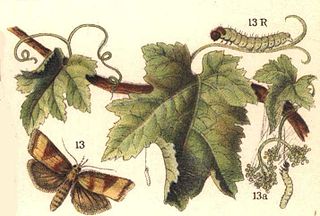
The Sparganothini are a tribe of tortrix moths.
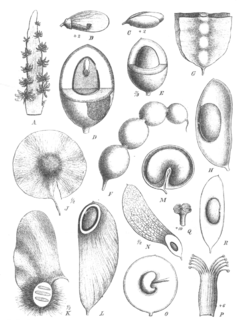
Lonchocarpus is a plant genus in the legume family (Fabaceae). The species are called lancepods due to their fruit resembling an ornate lance tip or a few beads on a string.
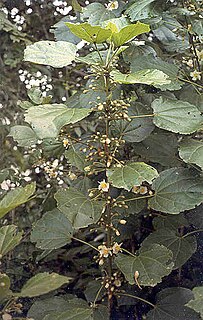
Hampea is a genus of flowering plants in the family Malvaceae. They are trees native to Mexico, Central America, and Colombia. There are about 21 species.

Licania is a genus of over 200 species of trees and shrubs in the family Chrysobalanaceae. Species are found naturally occurring in Neotropical forests from southern Mexico to Brazil and the Lesser Antilles. Due to increased deforestation and loss of habitat, several species have declined, some markedly so, and L. caldasiana from Colombia appears to have gone extinct in recent years. Many species are either rare or restricted in distribution and therefore potentially threatened with future extinction.
Asturodes is a genus of snout moths in the subfamily Spilomelinae of the family Crambidae. The genus is placed in the tribe Margaroniini.
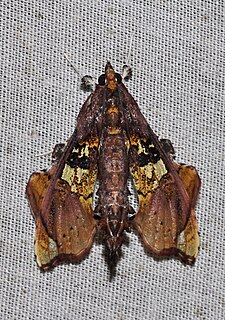
Terastia is a genus of snout moths in the subfamily Spilomelinae of the family Crambidae. It was described by Achille Guenée in 1854 with Terastia meticulosalis as type species. The genus is currently placed in the tribe Margaroniini, where it is closely related to the genera Agathodes and Liopasia.

The ladder-backed ethmia moth is a moth in the family Depressariidae. It is found from the Gulf region of Texas and Mexico to the west coastal plain of Mexico, Chiapas, El Salvador and Costa Rica.

Ethmia perpulchra is a moth in the family Depressariidae. It is found from Veracruz in Mexico to Guatemala, Honduras and Costa Rica.

Dunama jessiebarronae is a moth in the family Notodontidae. It is found in Costa Rica, where it is only known from the eastern slopes of the Cordillera Volcanica de Guanacaste, Cordillera Volcanica Central, Cordillera de Talamanca, llanuras de Sarapiqui, and the lowlands of the Caribbean, at elevations ranging from 50 to 1,115 meters.

Dunama janewaldronae is a moth in the family Notodontidae. It is found in Costa Rica, where it is known from the eastern side of the Cordillera Volcanica de Guanacaste at elevations ranging from 400 to 680 meters.
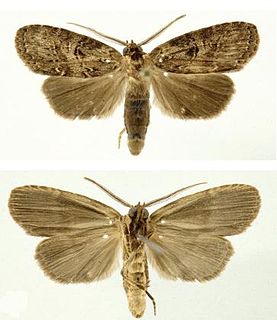
Dunama jessiebancroftae is a moth in the family Notodontidae. It is found in Costa Rica, where it is known from the Peninsula de Nicoya, and the lowland of central Pacific Costa Rica, at elevations ranging from 50 to 1,286 metres.

Dunama janecoxae is a moth in the family Notodontidae. It is found in Costa Rica, where it is known from the Cordillera Volcanica de Guanacaste and the eastern slope of the Cordillera de Tilaran and Talamanca, occurring at elevations ranging from 1,090 to 1,185 meters.

Dunama biosise is a moth in the family Notodontidae. It is found in Costa Rica, where it is known from the Osa Peninsula, Area de Conservacion Osa at elevations ranging from 0 to 100 meters.

Dunama indereci is a moth in the family Notodontidae. It is found in Costa Rica, where it is known from the Villa Blanca, in San Ramon, Alajuela province, at an elevation of 1,115 meters in a montane pass between Costa Rica’s Cordillera de Tilaran and the Volcanica Central.
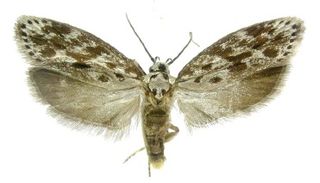
Ethmia dimauraorum is a moth in the family Depressariidae. It is found in Costa Rica, where it has been recorded at altitudes between 700 and 1,300 meters on the Pacific slope of the Cordillera de Guanacaste, at 750 meters (2,460 ft) in the Cordillera Central and at 1,000 meters (3,300 ft) at the Caribbean side of the Cordillera de Tilarán.
Prunus annularis is a species of Prunus in the family Rosaceae. It is native to cloud forests along the Pacific coasts of Mexico and Central America. It is a tree 5 to 12 m tall. It is fed upon by caterpillars of the genus Oxynetra.

Winifred Hallwachs is an American tropical ecologist who helped to establish and expand northwestern Costa Rica's Área de Conservación Guanacaste (ACG). The work of Hallwachs and her husband Daniel Janzen at ACG is considered an exemplar of inclusive conservation.

Burnsius is a genus of New World checkered-skippers in the butterfly family Hesperiidae. The genus was erected by Nick V. Grishin in 2019. There are about 12 described species in Burnsius.
References
- ↑ "Venada". www.nic.funet.fi. Retrieved 7 December 2016.
- ↑ Burns, John M.; Janzen, Daniel H.; Hallwachs, Winnie; Hajibabaei, Mehrdad (2013). "DNA Barcodes Reveal Yet Another New Species of Venada (Lepidoptera: Hesperiidae) in Northwestern Costa Rica". Proceedings of the Entomological Society of Washington. 115 (1). doi:10.4289/0013-8797.115.1.37.
| | This Hesperiidae-related article is a stub. You can help Wikipedia by expanding it. |